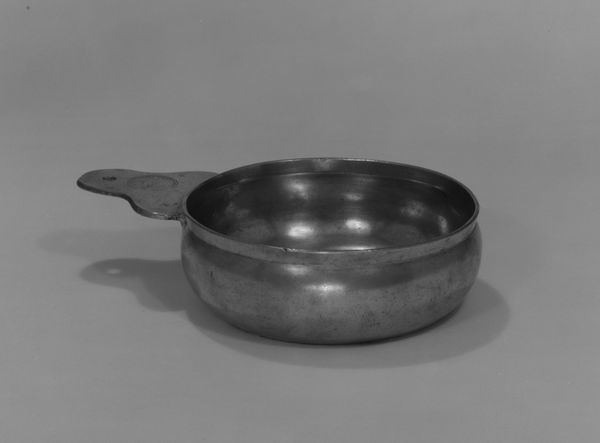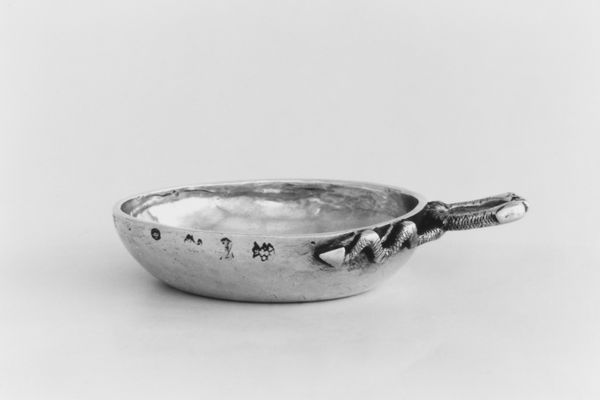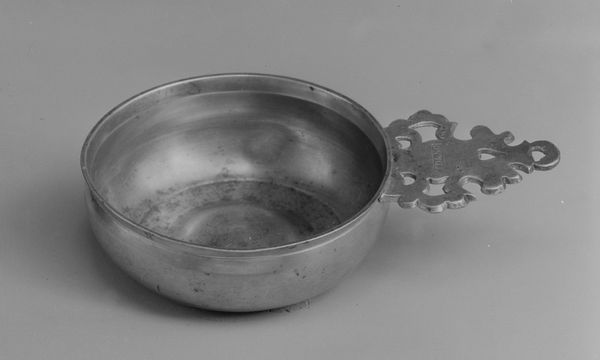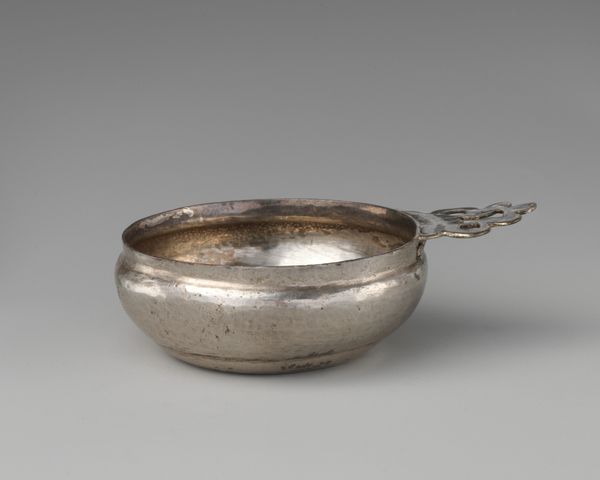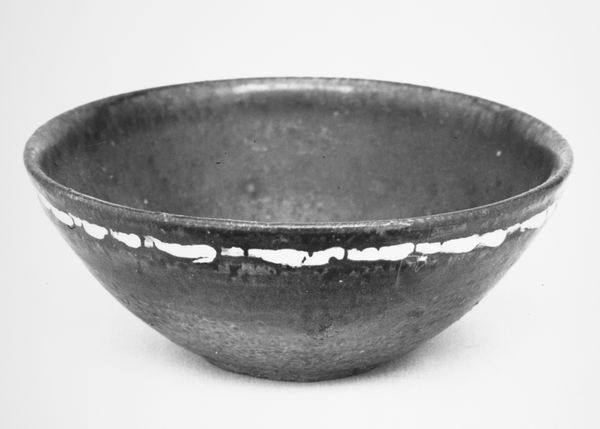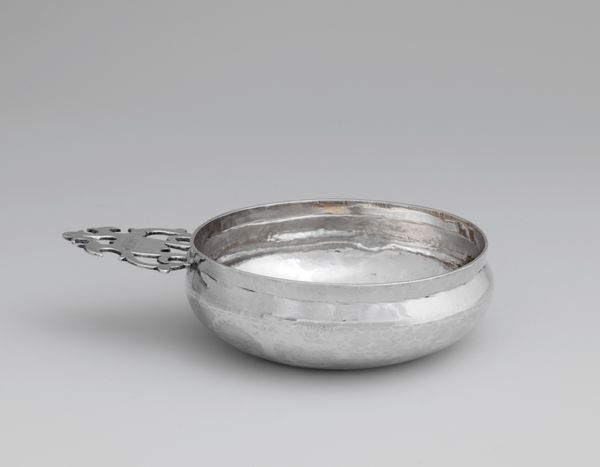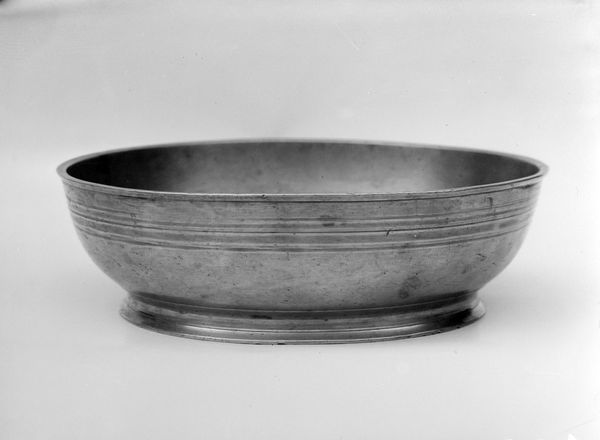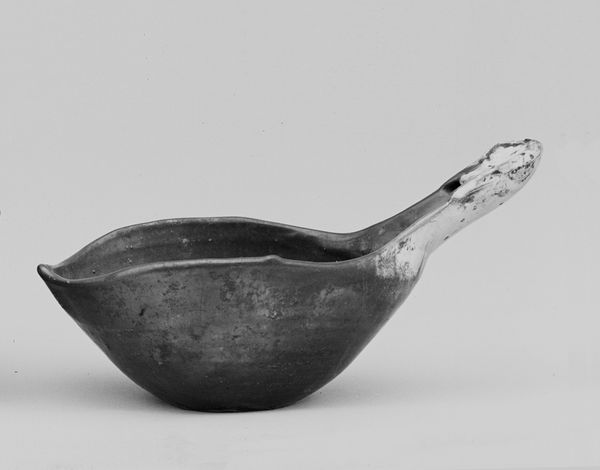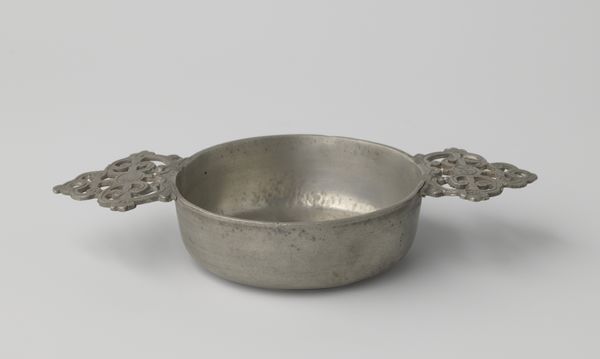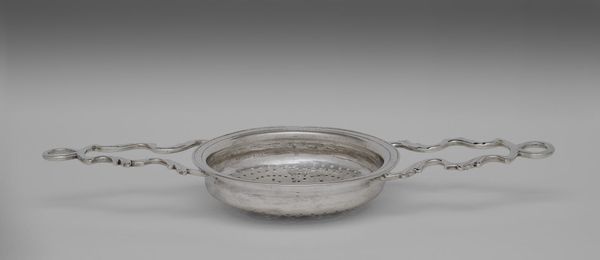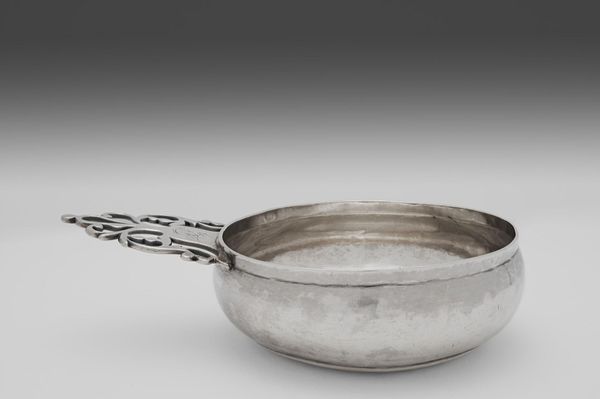
Dimensions: 2 x 7 7/8 x 5 1/4 in. (5.1 x 20 x 13.3 cm)
Copyright: Public Domain
Curator: Welcome. We're standing before a "Porringer," created by Samuel Hamlin, sometime between 1773 and 1801. It's currently held here at the Metropolitan Museum of Art. What catches your eye? Editor: Oh, it's lovely! Gives me a serene feeling, like a calm pond reflecting moonlight. It looks so smooth and substantial, that silver has an undeniable gravity. And the handle—it’s like frozen lace! Curator: Precisely! Notice the simplicity of the bowl's form—its unadorned surface acts as a foil for the Baroque handle. The juxtaposition invites contemplation on the values placed on utility versus ornamentation. What meaning do you extract? Editor: The bowl shape almost pleads to be filled and brought to the lips. It reminds me of hushed nurseries, herbal tea and healing. But the austere material stops short of sentimental; that etched handle adds just the right touch of sophistication to take it elsewhere. Curator: Indeed, the silversmith’s craft invites speculation on what it may have held—gruel for an infant or medicine, perhaps. Now, if we analyze the handle itself we see repeated motifs—circles and curves creating complex patterns of negative space. Editor: I see, so you’re noting that the rigid geometry makes the metal somehow lighter. I wonder if the artist understood that playful detail in such stark contrast? Or the original user even. Curator: Certainly, the handle showcases artistry far exceeding the utilitarian demand. These are indicators of Hamlin's skill and sophistication. This Baroque piece showcases refined tastes and values beyond its simple functional purpose. Editor: Absolutely, though you make it sound somehow clinical when it could just be joy... Maybe Hamlin was whistling a merry tune the whole time he built this and the curves were his own personal brand of optimism? Either way, something about it whispers comfort and care. Curator: An intriguing notion indeed. By meticulously studying material, form, and maker, we arrive at greater comprehension. Editor: Maybe, but if the handle is not joy and it's "merely Baroque artistry far exceeding utilitarian demand" I think something is broken with your semiotics or formalism here... It has clearly filled my "utilitarian demand" of "joy"... I guess it has some agency after all.
Comments
No comments
Be the first to comment and join the conversation on the ultimate creative platform.
